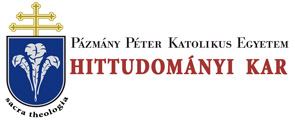Folia Theologica et Canonica 3. 25/17 (2014)
IUS CANONICUM - Anne J. Duggan, The paradox of marriage law: from St Paul to Lateran IV (1215)
200 ANNE J. DUGGAN Lombard lawyers (schooled in Lombard and Roman law) and the followers of Burchard’s rules, who defined as incestuous all sexual contact with relatives within six or seven generations of a common ancestor, in favour of the latter.44 Thus reinforced, the confused tradition was received by Bishop Ivo in Chartres (c\ 1090-1 115)45 and Master Gratian in Bologna (1120s),46 with disturbing consequences. At the same time, spiritual relationship formed another category of exclusion. Sponsorship of a child at baptism or confirmation created a relationship akin to that by blood. Where a man or woman acted as godparent at baptism or confirmation, he or she acquired a spiritual relationship both with the child and with the child’s natural parents, such that marriage was barred between godparent and godchild, godchild and natural child, and god- and natural parent. If two or more persons performed this function together, they became spiritually related not only to their godchildren but also to one another, and in some regions marriage between their natural children was also prohibited, since they had become spiritual siblings with one another as well as with the godchildren.47 44 PL CXLVI. 1379-1383, no. 92, at 1379-1381; cf. ibid., 1402-03 no. 113; also in Gratian, C.35 q.5 C.2. 45 Although in his treatment of incest in Decretum, 9.6.1 A, Ivo of Chartres gave pride of place to the definitions in the Inst. 1.10.1-12, the Dig. 3.2.13.4, and the Julian Epitome, 32.1-2, he also transmitted Alexander II’s letter (Decretum, 9.6.6), followed by Isidore of Seville’s consanguinity table (Decretum, 9.6.7; Etymologiae, ix.6) 46 Decretum, C.35 q.2-3 c.20. Especially since the publication of Winroth, A., The Making of G ration’s Decretum, Cambridge 2000. The dating of the Decretum has attracted and continues to excite controversy, which cannot be examined here. Nevertheless, an early version may have been in existence by the mid-late 1120s, when it furnished the basis of Winroth’s ‘Recension I’ (which he had dated c.l 140), an intermediate version in the mid-1130s, and a much expanded version, 'Recension II’, by around 1140, with further development thereafter: see K. Pennington’s review of Winroth in Speculum 78 (2003) 293-297, esp. 295, suggesting c.l 120 for the first redaction. That relatively simple picture of a two or even three-‘recension’ progression from the late 1120s to c. 1140 and beyond may need to accommodate a much more complex concept of evolution por etapas (stages), however: see Larrainzar, C., La formáción del Decreto de Gradano por etapas, in ZRG Kan. Abt. 118 (2001) 67-83. Viejo-Ximénez, J. M., La composizione del decreto di Graziano, in Szuromi, Sz. A. (ed.), Medieval Canon Law Collections and European lus commune (Középkori kánonjogi gyűjtemények és az európai ius commune), Budapest 2006. 97-169; and relevant articles in BMCL, n.s. 29 (2012-2013). For the current state of this rapidly developing research, in which the concept of ‘recensions’ has been abandoned in favour of evolution in stages, see Pennington, K., The Biography of Gratian, the Father of Canon Law, in Villanova Law Review, 59 (2014) 679-706. 47 Marriage between godparents and their godchildren had been forbidden by Justinian in 530 (Cod. 5.4.26 §2). For the tendency towards multiple godparents, see Alfani, G. (trans, by Calvert, C.), Fathers and Godfathers. Spiritual Relationship in Early Modem Italy, Farnham 2009. 13-26, at 23-26; cf. Alfani, G., Padri, padrini, patroni. La parentela spirituale nella storia, Venice 2007. See also, Lynch, J. H., Godparents and Kinship in Early Modem Europe, Princeton 1986.
